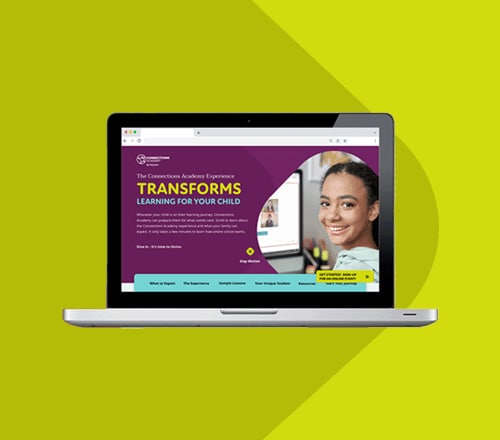How Can Technology Improve Education
byDan Belenky
4 min to read
We use technology on a daily basis to navigate to new places, look up recipes, keep our schedules, or when we want to learn. While older schools of thought might have seen technology as a barrier in the classroom, the last few years have shown that technology helps teachers and Learning Coaches to provide a richer, more vibrant learning experience for their students.
How technology can improve education and be an asset instead of a distraction all comes down to using technology in the classroom in a way that maximizes learning potential..
Why Technology is Important in Education
Beyond teaching vital digital literacy and critical thinking skills, technology in the classroom allows education to become an interactive experience for students while supporting active learning.
1. Improves Memory
Technology can help support memory and learning through something called “retrieval practice.”
Retrieval practice relies on students recalling and talking through concepts from memory rather than just rereading or reviewing the same facts over and over. This approach is impactful for students because memory retrieval requires just enough struggle, or “learning difficulty,” to promote long-term fact retention, and help identify any knowledge gaps the student may have.
There are a few ways you can partner retrieval practice with technology:
Flashcards and quizzes: Use websites or programs that let you make digital flashcards, practice tests, and study guides to practice recalling information.
Brain dumps: Encourage students to talk using voice recording apps to see what they already know well and what may still need additional review.
2. Supports Inquiry Based Learning
Inquiry Based Learning (IBL) empowers students to use digital tools like videos, podcasts, digital books, and virtual field trips to research and collect evidence for projects and assignments. This style of learning can be adult-guided or as student-driven depending on what best fits the student’s learning preference, and after they’ve been introduced to a topic, kids can feel free to indulge their curiosity rather than stay limited to the examples provided in their lessons.
By learning more on their own, students can explore subjects they are passionate about more deeply as well as practice their independent research skills, which can help boost their digital literacy and help them identify helpful resources.
3. Makes Learning Personalized
Technology makes learning flexible and dynamic, which means education can be personalized to how each child learns and their learning pace. Personalization through technology in education can be hugely beneficial for both gifted learners, who often crave a richer learning experience, and students who need extra support who or want approach a concept a different way.
For example:
Visual learners can watch videos or use adaptive learning platforms and virtual labs to supplement what they learn in class.
Extrinsically motivated students can use gamification to make learning more interactive and fun.
Students who struggle with reading can use screen readers to help them with large amounts of text
How Has Technology Changed Education?
Technology has had an undeniable impact on the way K-12 students learn today, especially for those who learn at home through online schooling. While online classrooms combine both physical textbooks and in-person learning experiences with discussion boards and recorded video lessons, the key to using tech in the classroom is to know when to use it and what kind of technology to use to benefit the student most.
Choosing the Right Technology for Your Student
Here is a quick checklist of things to consider that can help you make the most of digital learning:
Understand How Your Student Learns.
Ask your student what they are struggling with academically. Are they struggling with memory recall? Do they not understand the topics discussed in class because the examples given in the textbook are confusing?
Research What Digital Tools Could be Most Effective.
Even if you think digital is the way to go, different apps or websites may be a better fit than another. While your student may improve their French comprehension through a language immersion podcast, they may actually benefit more by practicing spelling those words with a typing game instead.
Set Limits.
There are countless ways for students to use technology to learn but discovering new apps or getting sidetracked while researching happens to the best of us. When starting a new learning technology, set a realistic limit to keep your student focused and productive rather than falling into an illusion of productivity.
Finding the level of technology in the classroom that best fits your student’s needs can be tricky, but striking the right balance can be key to helping your child succeed. With an online education through a Connections Academy-supported school, students have the chance to make education work for them and their learning preferences.
Download our free eGuide to learn more about how Connections Academy uses technology, digital tools, and interactive learning platforms.



